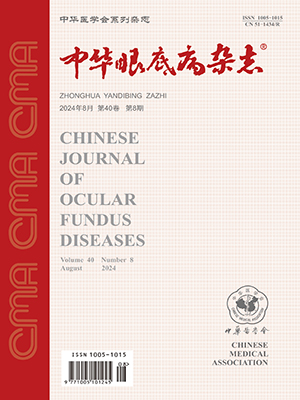| 1. |
Kawano H, Motoyama T, Hirashima O, et al. Hyperglycemia rapidly suppresses flow-mediated endothelium- dependent vasodilation of brachial artery[J]. J Am Coll Cardiol, 1999, 34(1):146-154.
|
| 2. |
Balletshofer BM, Rittig K, Enderle MD, et al. Endothelial dysfunction is detectable in young normotensive first-degree relatives of subjects with type 2 diabetes in association with insulin resistance[J]. Circulation, 2000, 101(15):1780-1784.
|
| 3. |
Wang Z, Gerstein M, Snyder M. RNA-Seq: a revolutionary tool for transcriptomics[J]. Nat Rev Genet, 2009, 10(1):57-63. DOI: 10.1038/nrg2484.
|
| 4. |
Mutz KO, Heilkenbrinker A, Lönne M, et al. Transcriptome analysis using next-generation sequencing[J]. Curr Opin Biotechnol, 2013, 24(1):22-30. DOI: 10.1016/j.copbio.2012.09.004.
|
| 5. |
Mantione KJ, Kream RM, Kuzelova H, et al. Comparing bioinformatic gene expression profiling methods: microarray and RNA-Seq[J]. Med Sci Monit Basic Res, 2014, 20:138-142. DOI: 10.12659/MSMBR.892101.
|
| 6. |
牛瑞, 东莉洁, 胡博杰, 等. 抗血管内皮生长因子药物治疗后视网膜血管内皮细胞基因表达谱的RNA—Seq分析[J].中华眼底病杂志,2018,34(3):275-280. DOI: 10.3760/cma.j.issn.1005-1015.2018.03.016.Niu R, Dong LJ, Hu BJ, et al. RNA-Seq analysis of gene expression profiling in human retinal vascular endothelial cells after anti-vascular endothecial growth factor treatment [J]. Chin J Ocul Fundus Dis, 2018, 34(3):275-280. DOI: 10.3760/cma.j.issn.1005-1015.2018.03.016.
|
| 7. |
Derynck R, Zhang YE. Smad-dependent and Smad-independent pathways in TGF-beta family signalling[J]. Nature, 2003, 425(6958):577-584. DOI: 10.1038/nature02006.
|
| 8. |
Attisano L, Wrana JL. Signal transduction by the TGF-beta superfamily[J]. Science, 2002, 296(5573):1646-1647. DOI: 10.1126/science.1071809.
|
| 9. |
Wan TT, Li XF, Sun YM, et al. Recent advances in understanding the biochemical and molecular mechanism of diabetic retinopathy[J]. Biomed Pharmacother,2015,74:145-147. DOI: 10.1016/j.biopha.2015.08.002.
|
| 10. |
Lee S, Clark SA, Gill RK, et al.1,25-dihydroxyvitamin D3 and pancreatic β-cell function: vitamin D receptors, gene expression and insulin secretion[J]. Endocrinology,1994,134(4):1602-1610. DOI: 10.1210/endo.134.4.8137721.
|
| 11. |
Carroll MC. The complement system in regulation of adaptive immunity[J]. Nature Immunology, 2004, 5(10):981-986.
|
| 12. |
Uesugi N, Sakata N, Nangaku M, et al. Possible mechanism for medial smooth muscle cell injury in diabetic nephropathy: glycoxidation-mediated local complement activation[J]. Am J Kidney Dis, 2004, 44(2):224-238.
|
| 13. |
Zhang J, Gerhardinger CM. Early complement activation and decreased levels of glycosylphosphatidylinositol-anchored complement inhibitors in human and experimental diabetic retinopathy[J]. Diabetes, 2002, 51(12):3499-3504.
|
| 14. |
Qin X, Goldfine A, Krumrei N, et al. Glycation inactivation of the complement regulatory protein CD59: a possible role in the pathogenesis of the vascular complications of human[J]. Diabetes, 2004, 53(10):2653-2661.
|
| 15. |
Gerl VB, Bohl J, Pitz S, et al. Extensive deposits of complement C3d and C5b-9 in the choriocapillaris of eyes of patients with diabetic retinopathy[J]. Invest Ophthalmol Vis Sci, 2002, 43(4):1104-1108.
|
| 16. |
Peng Q, Li K, Smyth LA, et al. C3a and C5a promote renal ischemia-reperfusion injury[J]. J Am Soc Nephrol, 2012, 23(9):1474-1485. DOI: 10.1681/ASN.2011111072.
|
| 17. |
Peng Q, Li K, Sacks S H, et al. The role of anaphylatoxins C3a and C5a in regulating innate and adaptive immune responses[J]. Inflamm Allergy Drug Targets, 2009, 8(3):236-246.
|
| 18. |
Segal BH, Grimm MJ, Khan AN, et al. Regulation of innate immunity by NADPH oxidase[J]. Free Radic Biol Med, 2012, 53(1):72-80. DOI: 10.1016/j.freeradbiomed.2012.04.022.
|
| 19. |
Segal BH, Veys P, Malech H, et al. Chronic granulomatous disease: lessons from a rare disorder[J]. Biol Blood Marrow Transplant, 2011, 17(1):123-131. DOI: 10.1016/j.bbmt.2010.09.008.
|
| 20. |
Adaikalakoteswari A, Balasubramanyam M, Rema M, et al. Differential gene expression of NADPH oxidase (p22phox) and hemoxygenase-1 in patients with Type 2 diabetes and microangiopathy[J]. Diabet Med, 2006, 23(6):666-674.
|




